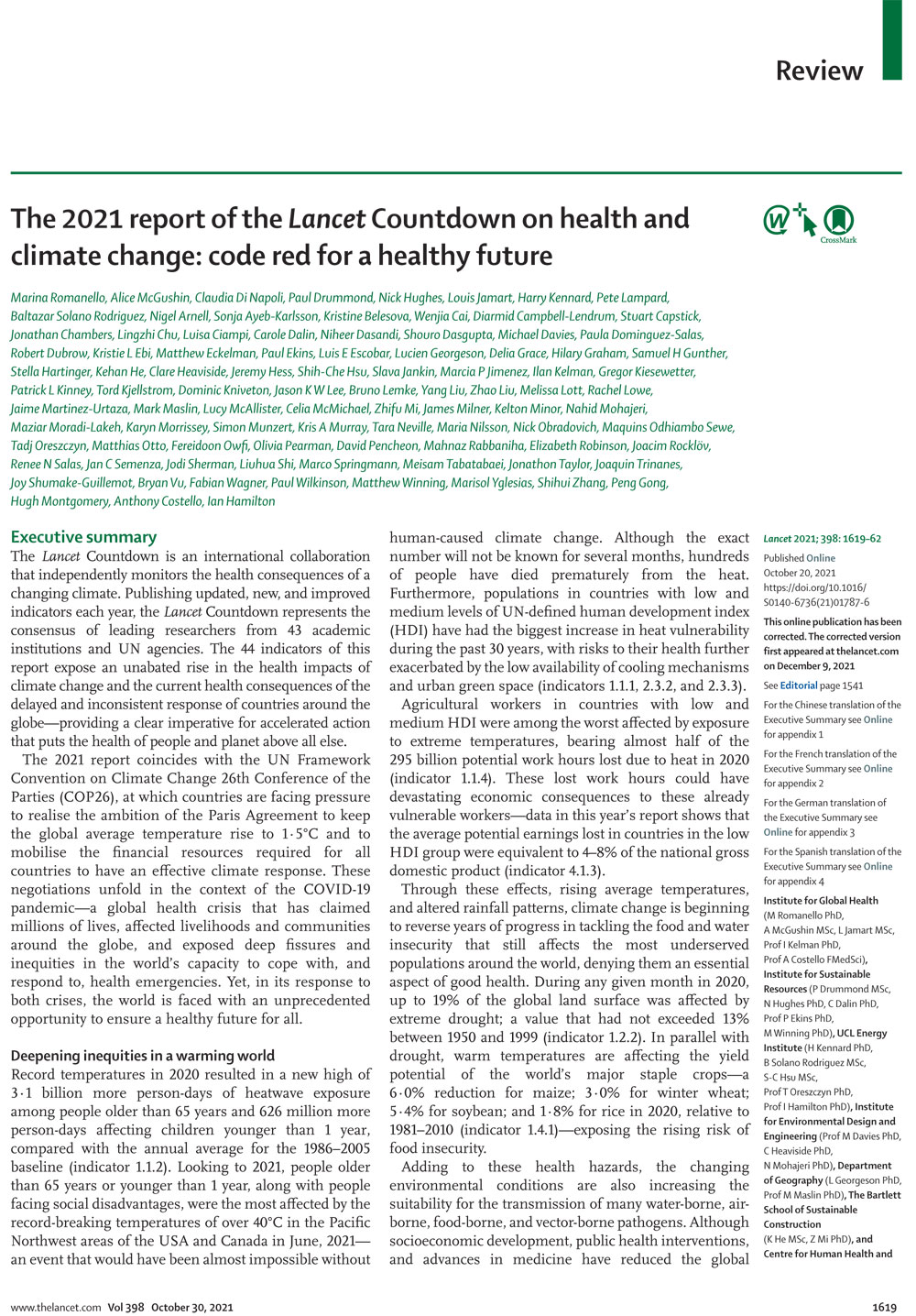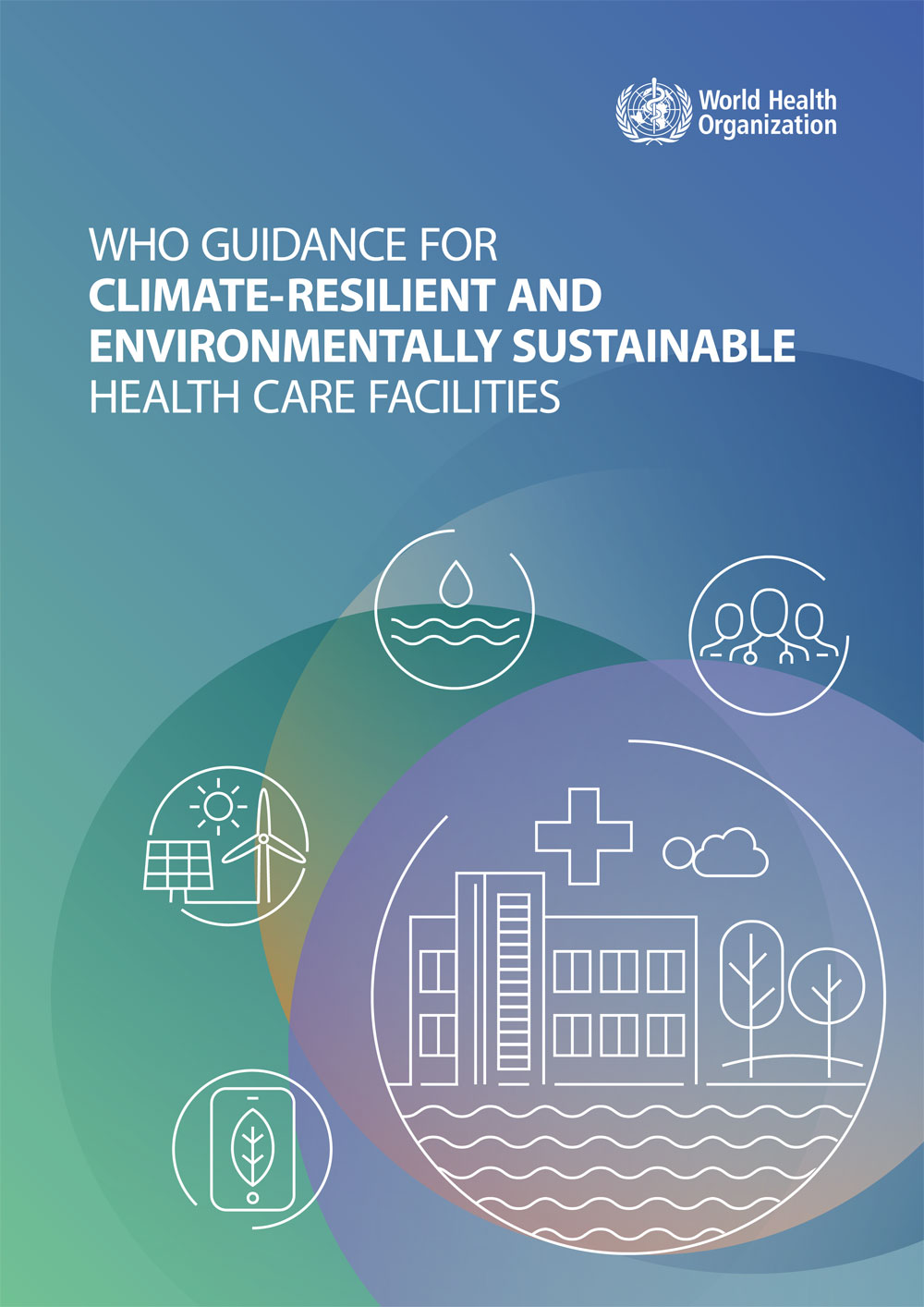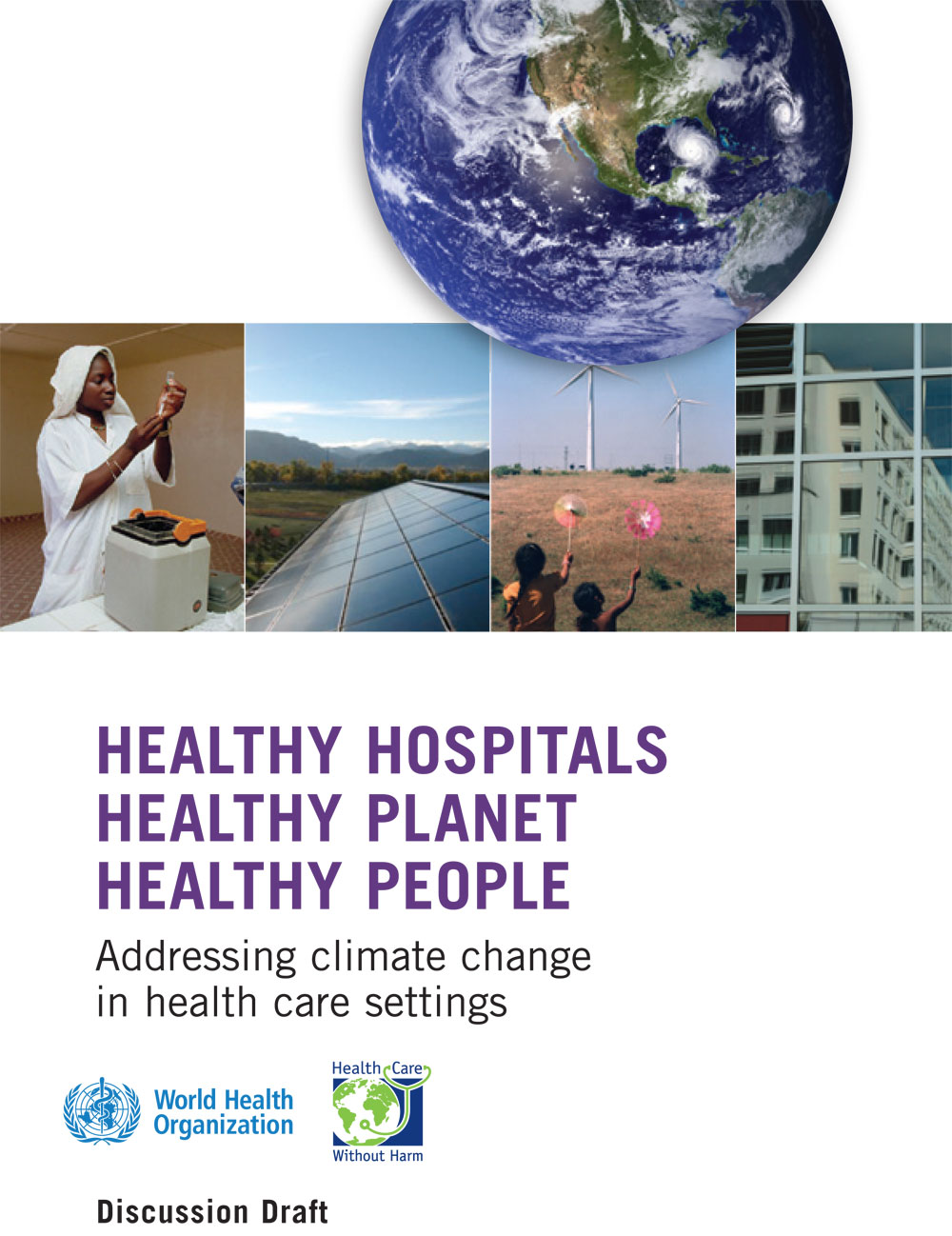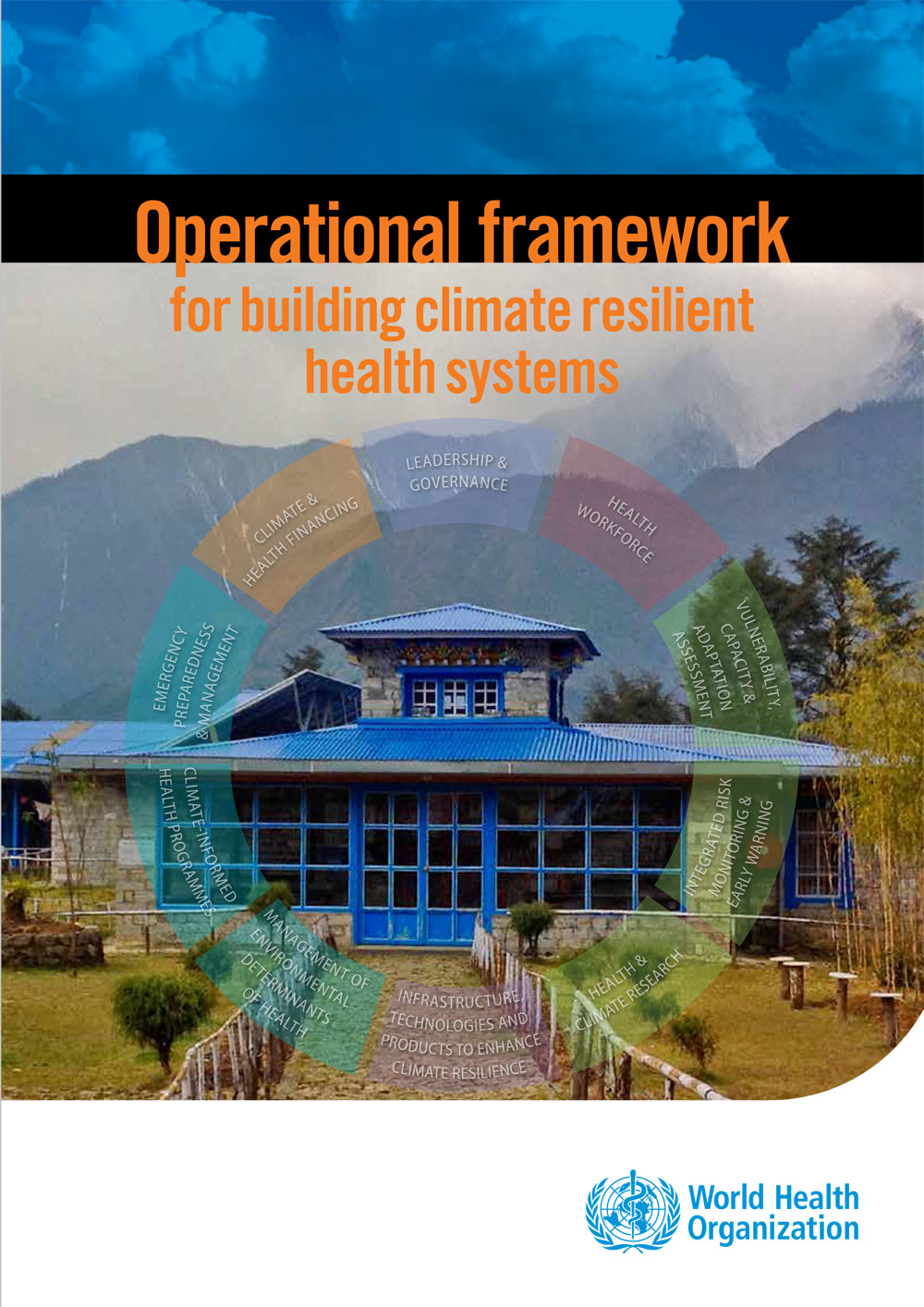News and Updates
External Resources
Measuring the Climate Resilience of Health Systems (2022)
This report was developed by the World Health Organisation. It assists health authorities – from local to national levels – in their efforts to chart progress towards developing health systems that protect populations from current climate-related hazards and that are prepared for future climate shocks and stresses. Because many of the actions and indicators of progress are relevant for actions taken by decision-makers in other sectors, this report can also inform their adaptation activities. To this end, it provides a framework and suggested approach for measuring the climate resilience of health systems.
Lancet Countdown 2021
The Lancet Countdown is an expert report that assesses the impacts of climate change on health
WHO guidance for climate resilient and environmentally sustainable health care facilities (2020)
The aim of this guidance is to enhance the capacity of health care facilities to protect and improve the health of their target communities in an unstable and changing climate; and to empower health care facilities to be environmentally sustainable, by optimizing the use of resources and minimizing the release of waste into the environment.
Checklist to Assess the vulnerabilities of health facilities in the context of Climate Change (2021)
Designed as a complementary tool to the WHO Guidance for climate-resilient and environmentally sustainable health care facilities, the primary purpose of this document is to support health care facility managers and other health workers in establishing a baseline with regards to climate change resilience in health care facilities. It also aims to inform the design of interventions to strengthen overall resilience and conduct vulnerability assessments in health care facilities.
WHO Hospital Safety Index (2015)
This guide provides a step-by-step explanation of how to use the Safe Hospitals Checklist, and how the evaluation can be used to obtain a rating of the structural and nonstructural safety, and the emergency and disaster management capacity, of the hospital. The results of the evaluation enable hospital’s own safety index to be calculated. Access the guide and the safety checklist here to assess your hospital’s probability of functioning through emergencies and disasters.
Individualized Rapid Assessment Tool (I-RAT) (2019)
The I-RAT is a rapid assessment tool to obtain an initial indication of the level of healthcare waste management at an individual healthcare facility. The tool results in an overall score that can be used by Ministries of Health to compare and rank healthcare facilities for the purpose of prioritizing interventions. The tool can also be used as a quick tool to identify possible areas for improvement. The I-RAT is not intended to provide a detailed or comprehensive assessment. The I-RAT was designed for use by technical consultants and/or hospital personnel specializing in healthcare waste management.
Healthy Hospitals Planet Healthy People: Addressing Climate Change in Health Settings
The paper begins to define a framework for analysing and addressing the health sector’s climate footprint – including identifying seven aspects of a climate-friendly hospital. It also draws on a series of examples from around the world that demonstrate that the health sector is indeed already beginning to provide leadership in this most important area of concern to the global community. This paper is the first step in a WHO project in collaboration with Health Care Without Harm (HCWH) aimed at addressing the climate footprint of the health sector.
Operational Framework for building climate resilient health systems (2015)
This document presents the World Health Organization (WHO) Operational framework for building climate resilient health systems. The framework responds to the demand from Member States and partners for guidance on how the health sector and its operational basis in health systems can systematically and effectively address the challenges increasingly presented by climate variability and change. Primarily intended for public health professionals and health managers, this framework would also help guide decision-makers in other health-determining sectors, such as nutrition, water and sanitation, and emergency management.







